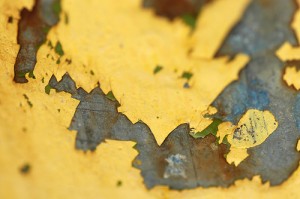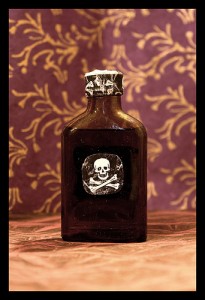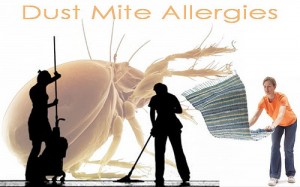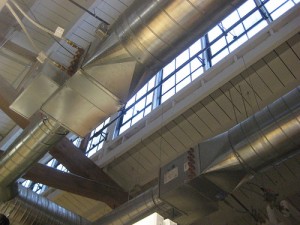By now, everyone knows that keeping employees healthy is the best way to trim healthcare costs, cut absenteeism, and just generally keep things running smoothly around the office. But what about if the office itself is the problem? How can you tell if your building is what’s making folks sick?
For companies who are moving into new spaces, or concerned that their current digs are contributing to the staff’s poor health, we present you with this list of things to look for -- and what to do to neutralize the risk.
1. Health Hazard: Asbestos
Asbestos was a popular building material all the way up through the late 1980s, in some places. If your building dates back to the 1970s or before, it almost surely had or has asbestos, either in the insulation or the floor and ceiling tiles.
Find It and Fix It: Ask your landlord for information on the asbestos situation in your building. If you’re uncertain, hire a professional asbestos inspector to determine your building’s status.
2. Health Hazard: Lead Paint

Lead paint is most dangerous to children, but it’s no picnic for adults either. Women of childbearing age should be especially careful about exposure to lead, because it’s stored in the bones and released as maternal calcium to a developing infant.
Find It and Fix It: If your office building was built before 1978, it almost certainly contains lead paint. Ask your landlord to provide you with information on the current lead status of the building. If he or she has recently renovated the space, the contractor should have been Lead-Safe Certified and provided paperwork to that effect.
3. Health Hazard: Toxic Chemicals

Here’s a scary thought: Just going to work can expose you to hazardous chemicals, such as the flame retardants in many types of office furniture, which can make you sick or even infertile.
Find Them and Fix Them: Buy metal components whenever possible (plastic is higher in these kinds of compounds), and wash your hands before you eat to avoid ingesting chemicals.
4. Health Hazard: Dust

We can hear you laughing from here. “Dust?” you say. “Seriously?”
Yes, dust. Dust allergies are common and debilitating, with sufferers experiencing everything from sneezing to asthma symptoms.
Find It and Fix It: To keep your staff healthy, make sure the cleaning people aren’t just emptying trash cans and shifting the recycling.
5. Health Hazard: Poor Indoor Air Quality

Sick Building Syndrome gained traction in the media a few years back, and shows no signs of abating. The symptoms — skin, eye, and throat irritation, hypersensitivity reactions, and just plain feeling bad -- are various, and can be attributed to many causes, which makes identifying the issue much more difficult.
Find It and Fix It: So how do you figure out if your workers are suffering from it? Look for potential sources. Sick Building Syndrome is generally thought to be caused by poor ventilation, as well as chemical and biological contaminants. If your building doesn’t meet current recommendations for ventilation (20 cfm/person) it might be time to ask the landlord for an upgrade.
Images: mikecogh/Flickr, Abby Lanes/Flickr, Cavin/Flickr, Adams999/Flickr, jennypdx/Flickr





